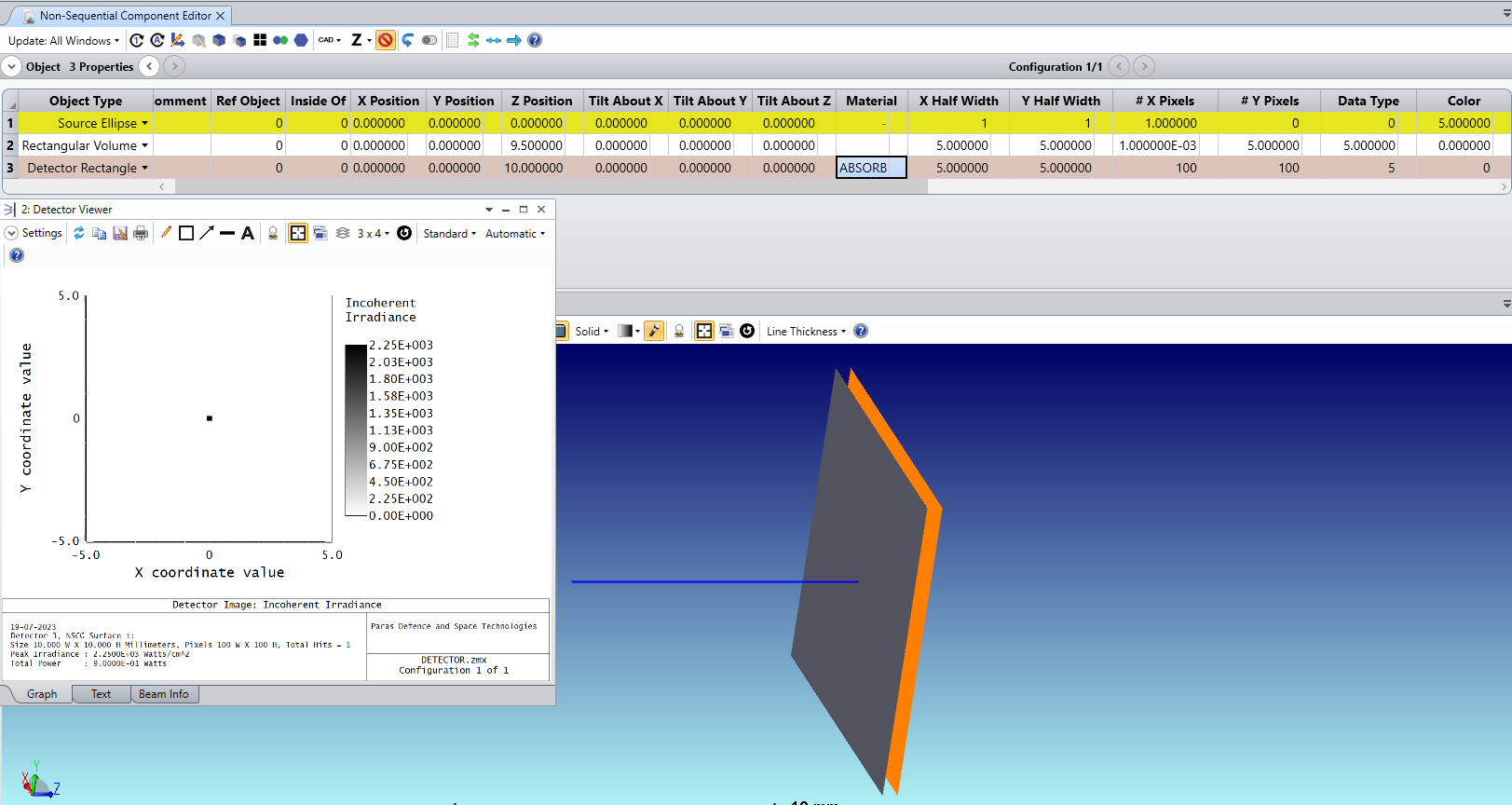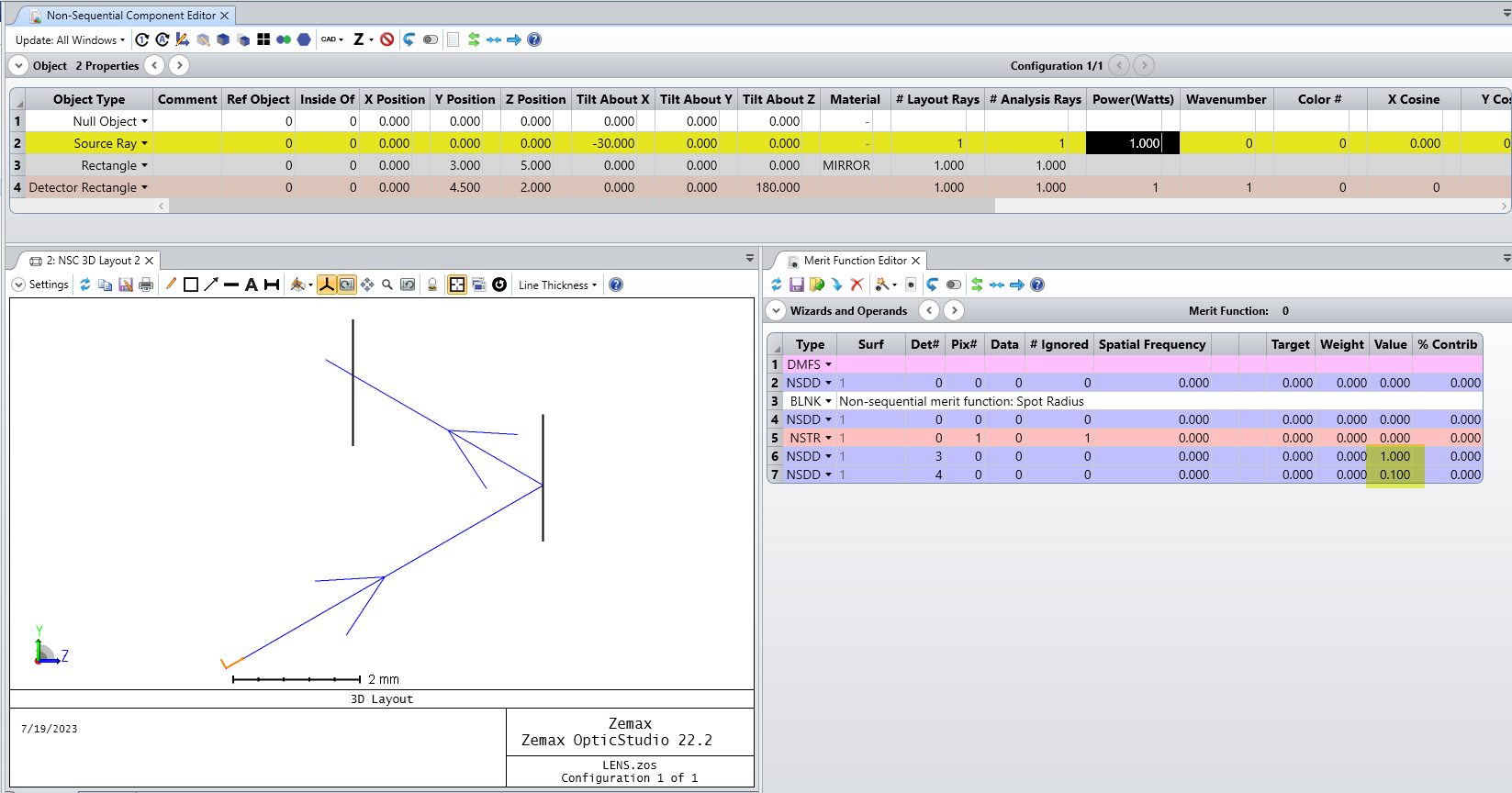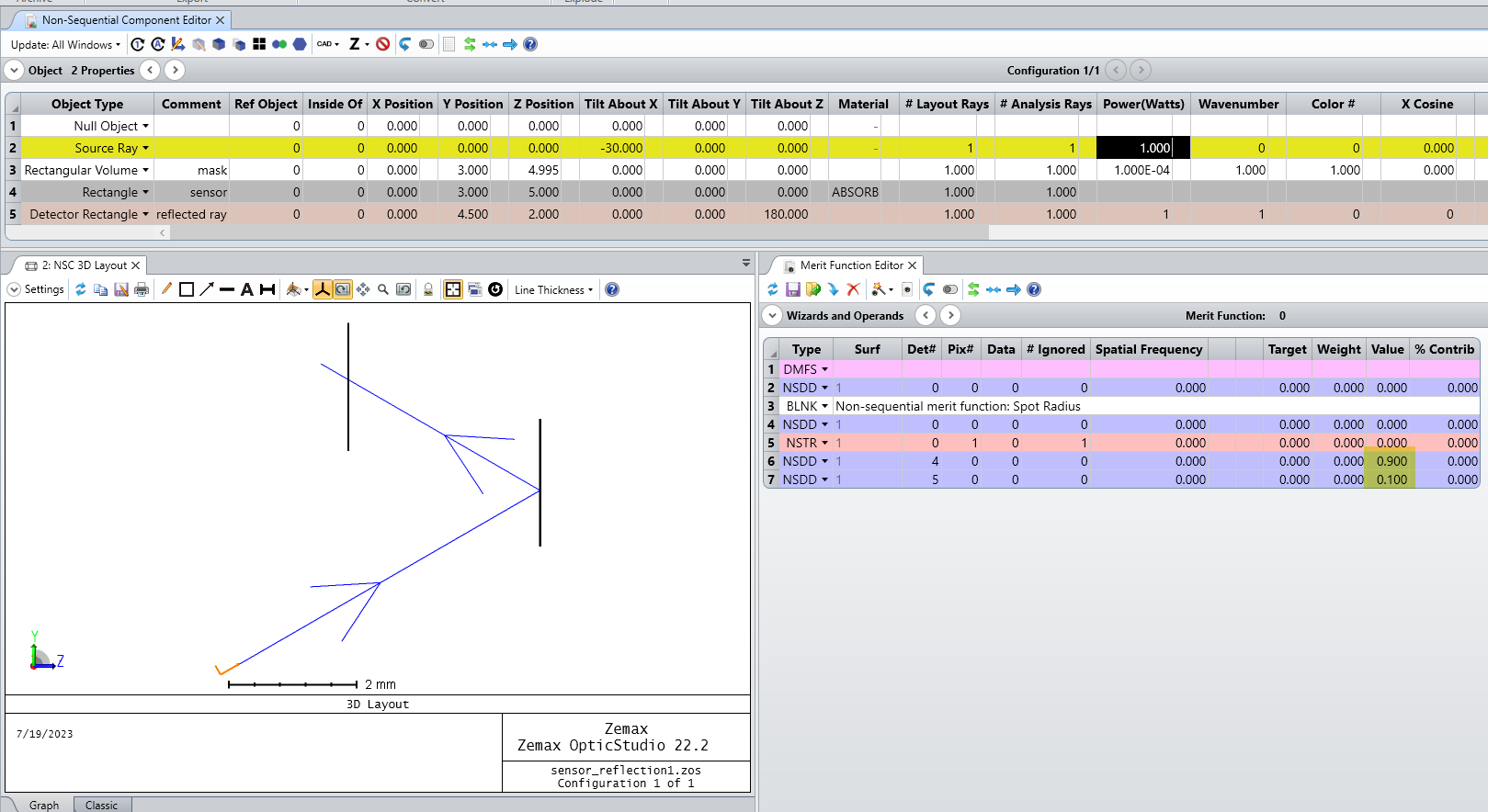I want to analyze reflections coming from the focal plane in non-sequential mode. I would like to configure a rectangular detector to, for example, reflect 10% of light and detect (and ideally absorb) the remaining 90%. Is there a way to do this? If I could assign a coating to the detector surface I would use a “IDEAL R10 0.9 0.1”…
Any ideas or suggestions will be appreciated.
Thank you,
John








